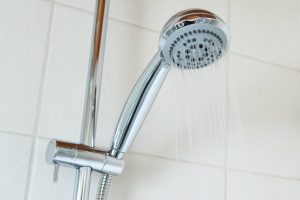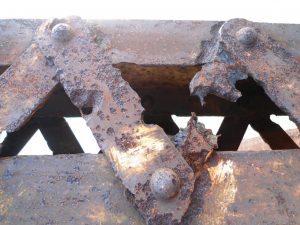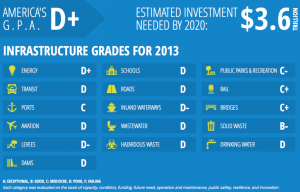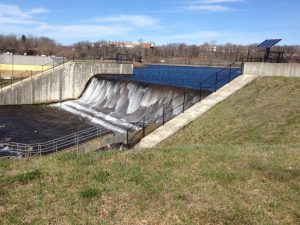Infrastructure Week 2015: Saving Our Nation’s Water Infrastructure
“It is very, very difficult to run a first-class county or city on second-rate infrastructure.” —Commissioner Melanie Worley, Douglass County, CO
 Infrastructure. It’s something we take for granted every single day — when we make coffee, flush our toilets, or drive to work. Infrastructure is what keeps our economy moving and our lives healthy. The virtual eradication of water-borne illnesses such as cholera and typhoid fever are the direct result of improved water and wastwater infrastructure, and the economic growth and strength of the past 50 years is due largely in part to our extensive transportation system. Unfortunately, America’s infrastructure is now past its prime and aging fast, and if it is allowed to fall into total disrepair, the long-term negative economic impact to our nation would be devastating.
Infrastructure. It’s something we take for granted every single day — when we make coffee, flush our toilets, or drive to work. Infrastructure is what keeps our economy moving and our lives healthy. The virtual eradication of water-borne illnesses such as cholera and typhoid fever are the direct result of improved water and wastwater infrastructure, and the economic growth and strength of the past 50 years is due largely in part to our extensive transportation system. Unfortunately, America’s infrastructure is now past its prime and aging fast, and if it is allowed to fall into total disrepair, the long-term negative economic impact to our nation would be devastating.
Infrastructure Week is a grassroots, stakeholder-driven movement whose affiliates span the nation and represent all sectors of the economy and civil society – from local chambers of commerce to labor unions to trade associations and private companies. Together, the coalition is united around delivering to Congress and the American people the core message of Infrastructure Week: Investing in America’s Economy. Infrastructure Week is bringing together thousands of stakeholders in Washington and around the country to highlight the critical importance of investing in and modernizing America’s infrastructure systems, and the essential role infrastructure plays in our economy.1
U.S. Infrastructure

When we think of infrastructure, our primary focus is frequently on what we can directly see — our transportation system. Admittedly, our roads, bridges, railways, airports, and seaports are in desperate need of attention. Decades of neglect have left us with a crumbling transportation system resulting in productivity losses and safety concerns. One out of every nine of the nation’s 70,000 bridges is considered structurally deficient, and 42% of America’s major urban highways remain congested, resulting in an annual cost of about $100 billion in wasted time and fuel costs. Yes, our transportation system is certainly at risk. However, our water infrastructure is also in critical need of attention, including drinking water, wastewater, and stormwater systems as well as our nation’s dams.
Water Infrastructure
What are some typical tasks in the daily life of the average American? Take a shower, make coffee, prepare meals — maybe run a load of laundry or water the lawn. It is so easy to take these simple, everyday actions for granted, but they all rely on something we largely cannot see: water infrastructure. Water infrastructure isn’t just a few underground pipes. According to the EPA, water infrastructure includes all the man-made and natural features through which water is treated and moved. And while it is all part of the water environment, it is conducive to think about infrastructure in terms of drinking water, wastewater, and stormwater. Drinking water infrastructure includes lands in source water areas, reservoirs and storage, treatment plants, and distribution systems; wastewater infrastructure includes collection systems and pipes, pump stations, treatment plants, and septic systems; and stormwater infrastructure includes catch basins, stormwater pipes, green infrastructure approaches that infiltrate and manage water where it falls, and land management practices that keep runoff from adversely impacting surface water or groundwater.2 And let’s not forget dams. The U.S. has over 84,000 dams, 14,000 of which are considered high hazard, meaning that failure of the dam would likely cause the loss of life. Even more concerning is the fact that funding is simply not available for inspection and maintenance. For example, South Carolina has 2,380 dams, and the state employs only one full-time inspector and one half-time inspector to inspect them all.
Infrastructure Report Card

So how does our nation’s infrastructure rate? In 2013, the American Society of Civil Engineers (ASCE) issued a report card giving an overall grade of D+, with drinking water, wastewater, and dams each receiving a D. Hazardous waste also received a D, which is significant because site cleanup is imperative to the safety of our nation’s water supply. The report, which is issued every four years, also noted that in order to bring our infrastructure up to par by 2020, the United States would have to invest $3.6 trillion. And while $3.6 trillion may seem daunting, the cost of allowing the nation’s infrastructure to crumble would be exponentially higher. Effective water infrastructure is imperative for maintaining public health, and a significant component of our nation’s economic viability.
Much of our nation’s water infrastructure dates back to WWII or earlier, with some east coast communities still using pipes that were installed in the late 1800’s. The Clean Water Act passed in 1974, and with it the country saw a boom in construction of wastewater treatment plants, many of which are now 30-40 years old, and likely in need of rehabilitation or replacement. The useful life cycle of pipes and treatment plants varies greatly, and is largely dependent on materials used, environment, and upkeep. In fact, some pipes from the early 1900’s are in better condition than those that are half their age. Therefore, it is critical that communities utilize methodologies such as Capital Efficiency Plans™ that evaluate the actual condition of critical components of infrastructure so that they make the most effective use of their very limited infrastructure dollars.
In 2002, the U.S. EPA released the Clean Water and Drinking Water Gap Analysis Report, which compared America’s drinking water and wastewater infrastructure needs to the available revenues of utilities. The report showed a projected gap in funding of over $500 billion over the next 20 years. And that’s just straightforward funding. These estimates do not include factors such as population growth or climate change, which will likely increase the funding gap significantly. So where do we start?
Finding a Solution
First and foremost, we must find a way to close the funding gap, which will require a multi-faceted approach. Community outreach and education on the value of water and on our nation’s critical infrastructure needs will be paramount as utilities request higher rates and better conservation practices to implement improvements and meet growing demand. And while rate increases will provide a portion of the much-needed funding, and conservation will help lower demand, utilities will still need to execute careful asset management in order to effectively improve our infrastructure long-term. In addition, implementation of effective management practices will dramatically increase utilities’ efficiency and sustainability. In fact, the EPA and six major professional associations in the water sector came together to develop and advocate an approach through the Effective Utility Management (EUM) partnership, which detailed ten attributes of effectively managed water sector utilities along with a framework for implementation in order to assist utilities with management practices in today’s challenging and complex climate.
 But utilities and consumers alone will be unable to carry the full burden of the funding gap, and so we must look to more creative solutions. Already enacted in 2014 as part of the Water Resources and Reform Development Act, WIFIA provides low-interest federal loans for up to 49% of large drinking water, wastewater, and water reuse projects. Another option includes tax incentives for industry to implement water efficiency and recycling/reuse projects. These incentives will encourage more active involvement from the private sector, who many believe hold the key to funding the infrastructure of the future. In recent years, as public funding has drastically decreased while the need for infrastructure improvements has expanded, utilities and governments have become increasingly interested in public-private partnerships, or P3s. Of special note is the fact that the federal government is now encouraging and even providing assistance to the private sector to fund infrastructure. If current trending continues, it seems likely that P3s will hold a significant role in the future of water and wastewater infrastructure funding.
But utilities and consumers alone will be unable to carry the full burden of the funding gap, and so we must look to more creative solutions. Already enacted in 2014 as part of the Water Resources and Reform Development Act, WIFIA provides low-interest federal loans for up to 49% of large drinking water, wastewater, and water reuse projects. Another option includes tax incentives for industry to implement water efficiency and recycling/reuse projects. These incentives will encourage more active involvement from the private sector, who many believe hold the key to funding the infrastructure of the future. In recent years, as public funding has drastically decreased while the need for infrastructure improvements has expanded, utilities and governments have become increasingly interested in public-private partnerships, or P3s. Of special note is the fact that the federal government is now encouraging and even providing assistance to the private sector to fund infrastructure. If current trending continues, it seems likely that P3s will hold a significant role in the future of water and wastewater infrastructure funding.
In Conclusion

In the United States, we have come to expect and even take for granted safe, clean drinking water at the turn of a tap and wastewater neatly whisked away without giving it a second thought. But if we take a moment to think about our lives without water infrastructure, we quickly realize how much we depend on it, and how important it is to maintaining a healthy, viable economy and country. Therefore, it is imperative that we collectively research and implement innovative ways in which to rehabilitate and replace our nation’s failing water infrastructure.
“For the U.S. economy to be the most competitive in the world, we need a first class infrastructure system,” said the ASCE report. “We must commit today to make our vision of the future a reality—an American infrastructure system that is the source of our prosperity.”
